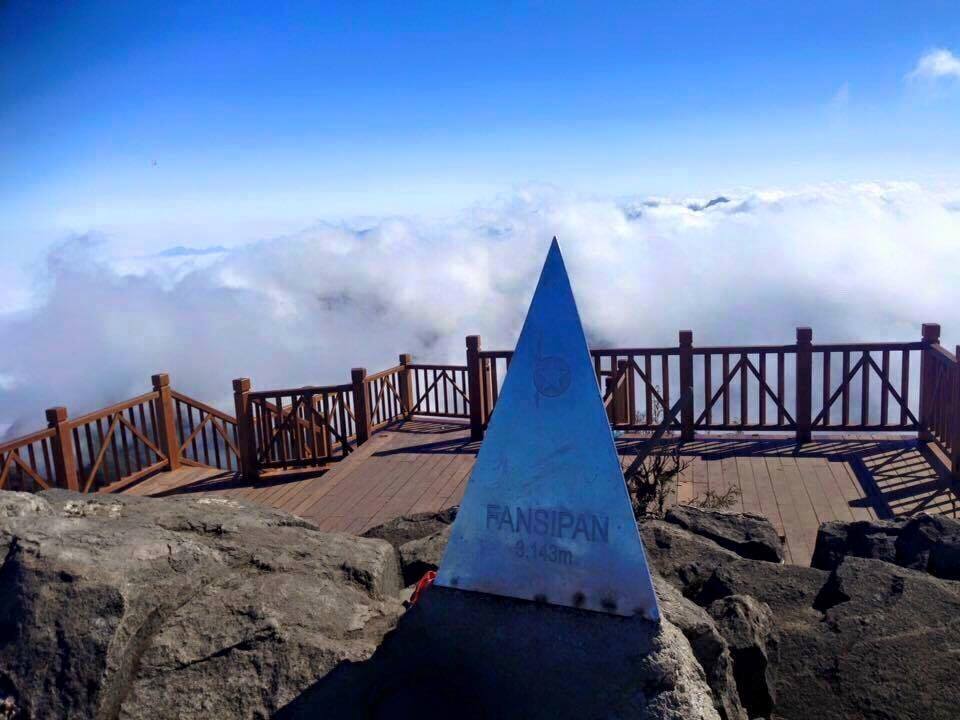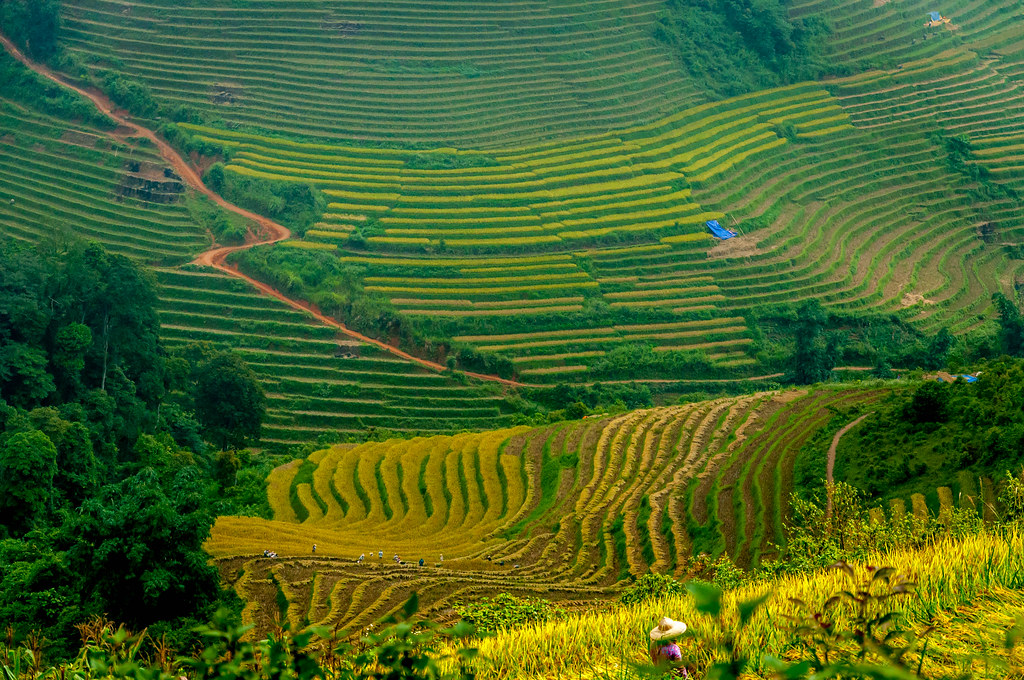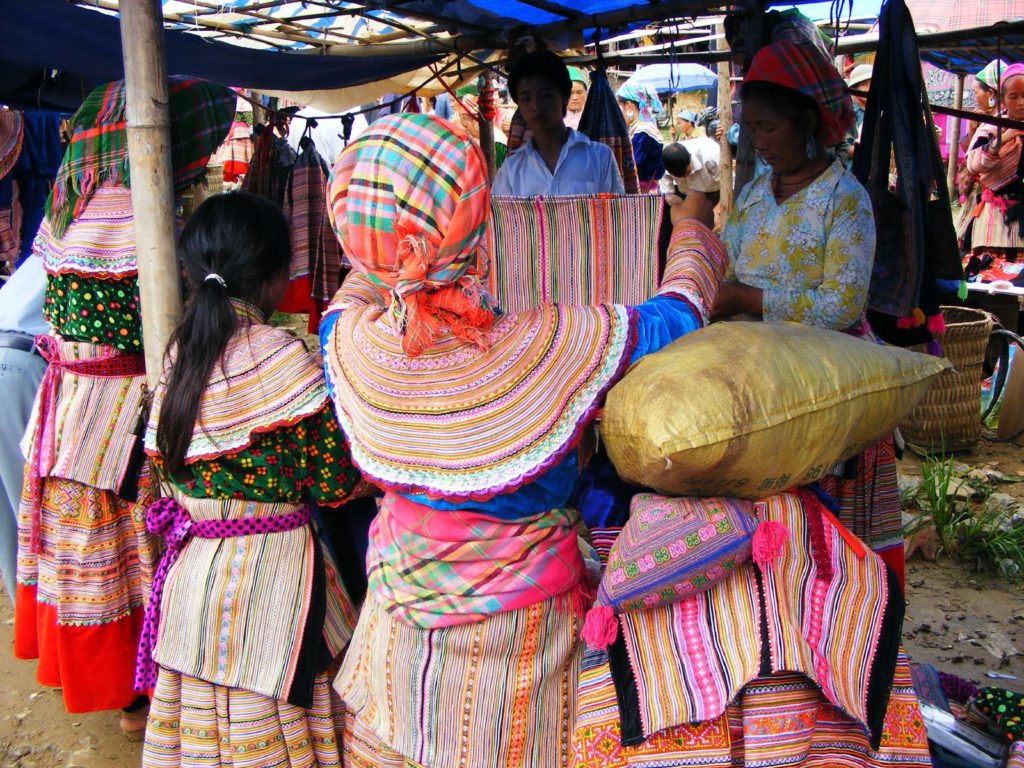While the mountain is undoubtedly a huge draw for visitors, Sapa is also home to indigenous hill tribe communities and picturesque rice terraces threaded with silvery streams.
With year-round cool weather and the occasional winter snowfall, this rustic hill station is one of Southeast Asia’s most charming destinations.
Ascend the ‘Roof of Indochina’
You can’t say you’ve been to Sapa if you haven’t visited Fansipan, the “Roof of Indochina”.
Rising an impressive 3,147 metres above sea level, the mountain is a hiker’s paradise with a challenging 11-kilometre trail that can take six to 12 hours to conquer.
 A popular option is the guided two-day trek that allows you to pace yourself and enjoy a picnic lunch and camp dinner before completing the final push to the peak the next morning.
A popular option is the guided two-day trek that allows you to pace yourself and enjoy a picnic lunch and camp dinner before completing the final push to the peak the next morning.
If you’re on a tight schedule, a cable car ride can whisk you to a serene garden mere steps away from the summit in just 15 minutes. From here, the peak is accessible via a staircase or funicular rail.
Spend a night in a village
One of the best ways to get to know Sapa’s indigenous residents is by spending a night with them to experience village life firsthand.
You can choose to bunk with a hill tribe family in their humble wooden lodgings or sleep in cosier, chalet-style en suite accommodation with air-conditioning.
Lodging with a local family helps them supplement their income from farming and offers a more authentic encounter for visitors, who get to enjoy home-cooked meals and fireside singalongs with their hosts.
Accommodation options include homestays in the village of Ban Ho where rooms are modestly furnished with mattresses and mosquito nets, or the boutique Eco Hills Homestay and Luckydaisy’s Buffalo House, both in Ta Van.
Explore the valleys
Ensconced by the towering Hoang Lien Son range, Muong Hoa Valley is dotted with hill tribe villages and cascading rice fields that change hue with the seasons.
From March to May, the rice terraces are a striking emerald, while from September to November, they take on the burnished gold of autumn.
 Temperatures get chilly from December to February, with the occasional snowfall transforming the valley into a wintry wonderland, so time your trip accordingly.
Temperatures get chilly from December to February, with the occasional snowfall transforming the valley into a wintry wonderland, so time your trip accordingly.
Situated less than 10 kilometres from Sapa town, the valley, which is home to ethnic Hmong, Dao and Giay people, can be explored on foot or motorcycle, with pit stops at local villages.
Shop in a vibrant market
There are plenty of markets in and around Sapa where you’ll find ethnic embroidery, local produce like wild honey and wine, as well as knick-knacks to bring home as souvenirs.
Sapa Market, located in Sapa town, is the most popular. It is also the place to go for gorgeous brocades in vivid colours, fruits, veggies and spices.
 On Saturday nights, the same spot hosts the Sapa Love Market, where young men and women once showed off their musical talents and sporting skills to woo a partner. Nowadays, the music and dance performances are mainly for show, but still worth a watch as they showcase different ethnic traditions.
On Saturday nights, the same spot hosts the Sapa Love Market, where young men and women once showed off their musical talents and sporting skills to woo a partner. Nowadays, the music and dance performances are mainly for show, but still worth a watch as they showcase different ethnic traditions.
About 100 kilometres from Sapa is Bac Ha Market, the largest market in Vietnam’s northwest, which takes place on Sunday mornings.
Here, you’ll find beautiful handmade clothing and accessories, as well as home-brewed wine and other produce sold by indigenous Flower Hmong, Black Dao, Tay and Xa Fang traders.
According to airasia.com













